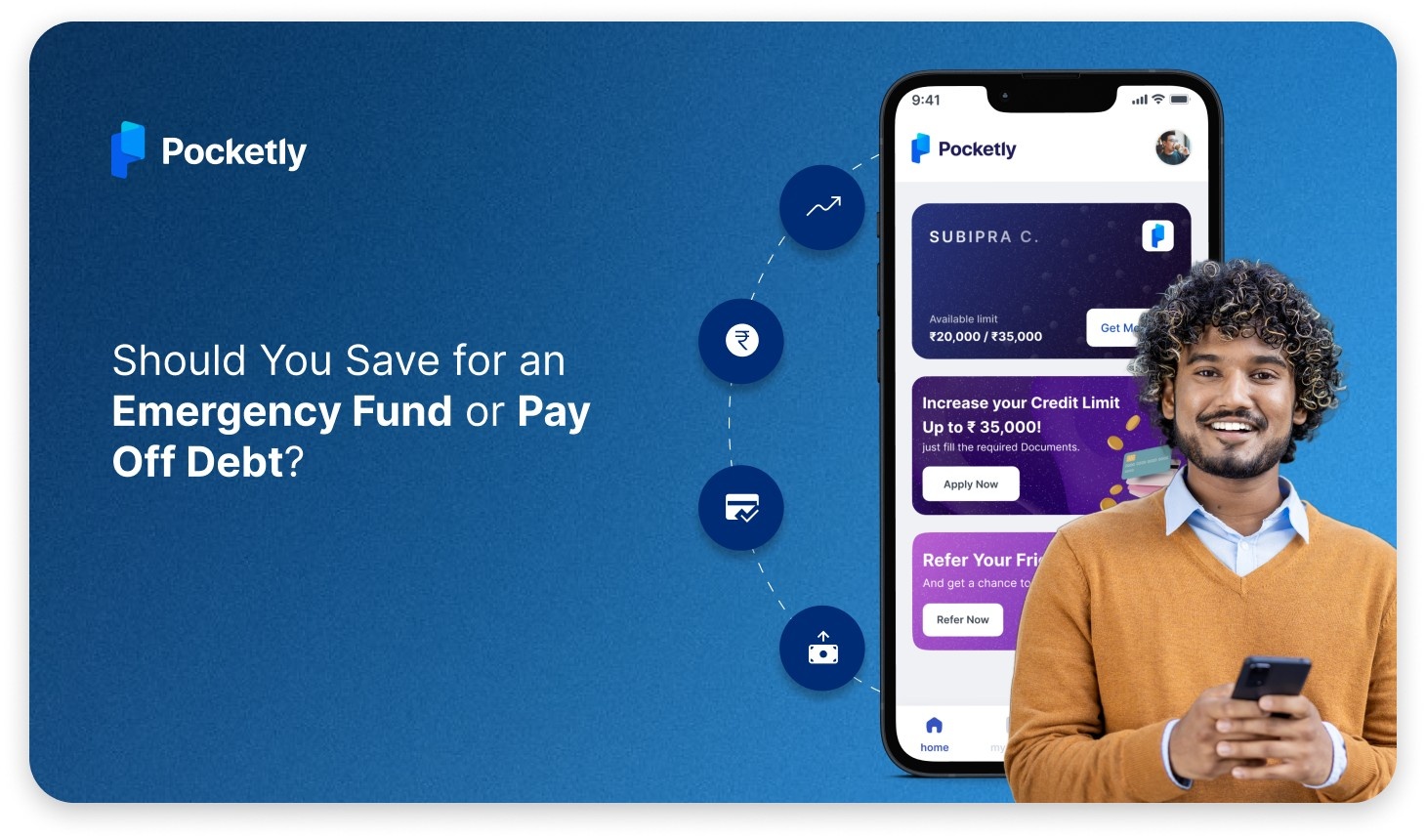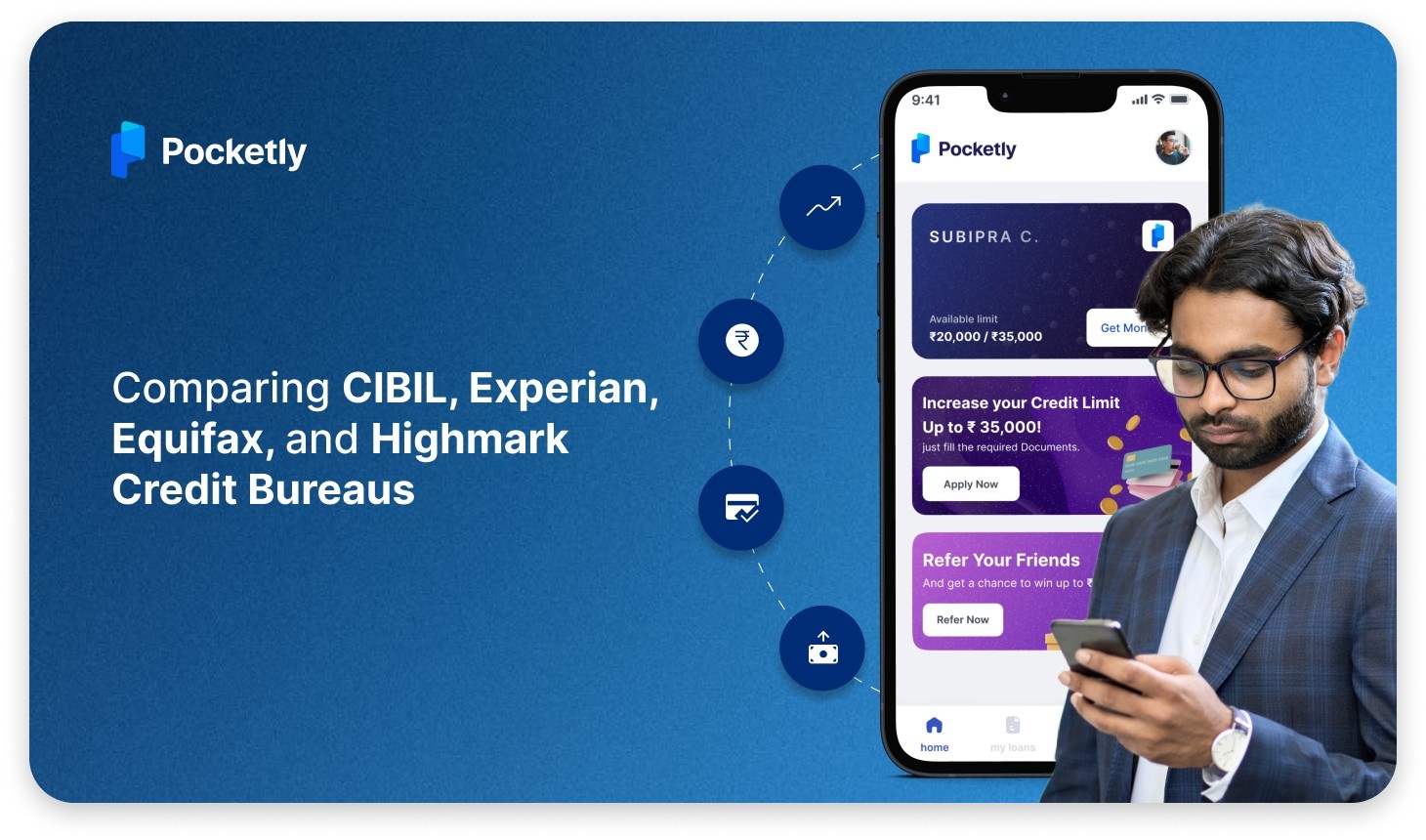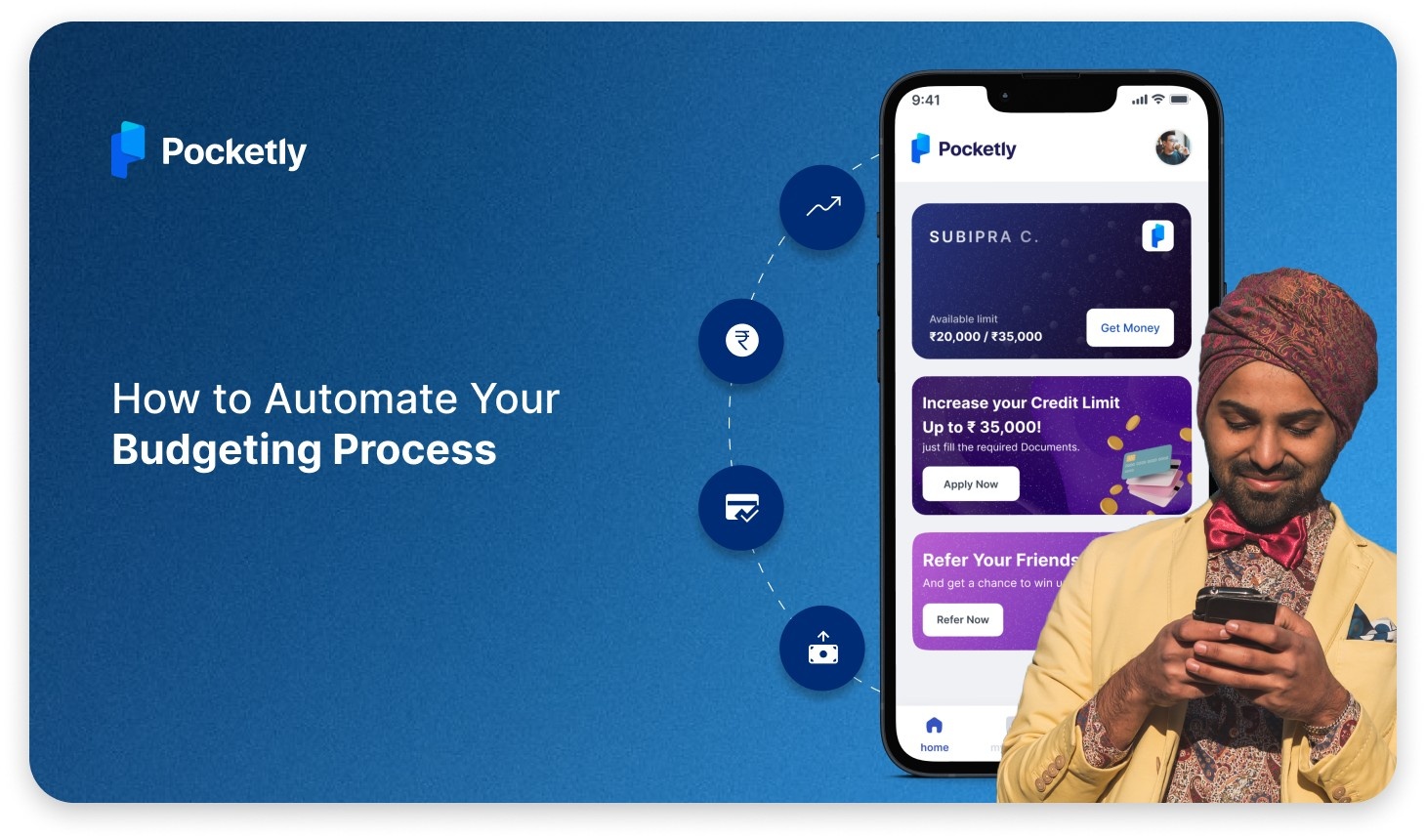
When you're earning Rs 25,000 a month, you might be wondering, "How much personal loan can I get on a 25,000 salary?" It's a common question, especially when you're considering taking a loan for personal expenses, an emergency, or even consolidating debt. The good news is, with a salary of Rs 25,000, you can definitely qualify for a personal loan, but the exact amount depends on several key factors, like your monthly expenses, credit score, and the lending institution’s criteria.
In this guide, we’ll walk you through everything you need to know about personal loan eligibility on a 25,000 salary. From understanding the role of your income and credit score to calculating your loan eligibility, we’ve got it covered. So, let’s dive in and figure out how much you can borrow and how to increase your chances of approval!
What is a Personal Loan?
A personal loan is an unsecured loan that can be used for a variety of purposes, such as consolidating debt, funding personal expenses, paying for medical emergencies, or even financing a wedding or vacation. Unlike other types of loans, personal loans don't require collateral, meaning you don’t have to pledge any assets (like your home or car) to secure the loan. The loan is based primarily on your creditworthiness, income, and ability to repay.
Personal loans typically come with fixed interest rates and repayment terms, making them an attractive option for individuals who need a lump sum of money quickly and want predictable monthly payments.
Why is a Personal Loan Important?
- Financial Flexibility: A personal loan gives you the freedom to use the funds as needed—whether it’s for an emergency, planned expenses, or even an investment in your future.
- No Collateral Required: Since personal loans are unsecured, you don’t need to risk your assets like property or vehicles, making them less stressful to apply for and approve.
- Fixed Repayment Terms: With set interest rates and fixed monthly payments, a personal loan offers clear repayment terms, which helps in budgeting and managing your finances.
- Helps in Debt Consolidation: If you have multiple high-interest debts, a personal loan can help consolidate them into one, potentially saving you money on interest and simplifying repayments.
- Quick Access to Funds: Personal loans are often disbursed quickly, sometimes within a few days of approval, making them a great option for urgent financial needs.
- Improves Credit Score: By taking a personal loan and making timely repayments, you can improve your credit score over time, as it shows lenders you can handle credit responsibly.
A personal loan is a very important financial tool that might help you achieve your goals, whether they’re immediate or long-term, while offering flexibility and security.
Top Features and Benefits of Personal Loans
Personal loans are one of the most flexible financial products available, offering a wide range of features and benefits to help meet your personal, financial, or emergency needs. Whether you’re looking to consolidate debt, pay for medical expenses, or fund a big event, a personal loan can be the perfect solution.
Let’s take a closer look at the key features and benefits that make personal loans a popular choice:
Key Features of Personal Loans:
- Unsecured Loan: Personal loans usually do not require any collateral, so you don’t have to pledge assets like your house or car.
- Fixed Interest Rate: Most personal loans come with fixed interest rates, which eventually makes your monthly payments might remain the same throughout the loan term, which makes budgeting easier.
- Flexible Loan Amounts: You can borrow anywhere from a small amount for short-term needs to larger sums for bigger expenses, with loan amounts typically ranging from Rs 50,000 - 20 lakh.
- Quick Processing and Disbursement: Personal loans are processed quickly, often with approval and disbursement within a few business days, making them ideal for emergencies.
- Flexible Repayment Terms: Repayment terms usually range from 1 - 5 years, depending on several factors of the loan amount and lender, giving you plenty of options to choose from.
Benefits of Personal Loans:
- Financial Flexibility: Personal loans mostly can be used for almost any purpose—whether it’s for medical expenses, home renovations, education, travel, or weddings—offering you complete freedom on how you spend the money.
- No Need for Collateral: Since personal loans are unsecured, you don't risk losing any valuable assets if you're unable to repay the loan.
- Simplified Application Process: The application process for personal loans is typically quick and straightforward. You can apply online or offline with minimal documentation, making it a convenient option.
- Consolidate Debt: If you're juggling multiple high-interest loans or credit card payments, you can use a personal loan to consolidate them into a single, manageable EMI with a lower interest rate.
- Boosts Credit Score: When you repay your personal loan on time, it might help improve your credit score, making you eligible for better loan terms in the future.
- Fixed Payment Schedule: Personal loans have a fixed repayment schedule, so you know exactly how much you need to pay each month, which helps you plan your finances efficiently.
With these features and benefits, a personal loan can be a very unique and excellent option for anyone looking for quick, hassle-free financing for personal needs.
Methods to Calculate Loan Eligibility
When you apply for a personal loan, banks and financial institutions use different methods to assess how much you can borrow. The two primary methods are the FOIR (Fixed Obligations to Income Ratio) method and the Multiplier Method. Let’s dive into how each of these works and how they impact your loan eligibility.
1. FOIR (Fixed Obligations to Income Ratio) Method
FOIR is a key metric used by banks to evaluate how much of your monthly income is already committed to fixed expenses, like current loans or credit card payments. This helps them assess how much room you have left to handle additional loan repayments.
- How It Works: FOIR is calculated by dividing your total fixed monthly obligations (EMIs, rent, existing loan repayments, etc.) by your monthly income.
- The 50% Rule: Banks typically want your total monthly expenses, including your potential personal loan EMI, to be no more than 50% of your income. So, if you earn Rs 25,000, your fixed obligations (including the loan repayment) should not exceed Rs 12,500.
- Example Calculation: If you’re earning Rs 25,000 a month, and you have existing EMIs and expenses totaling Rs 10,000, you may qualify for an additional loan of approximately Rs 2.8 lakh to Rs 5.6 lakh, depending on the lender and your credit score.
- Loan Range Based on FOIR: The loan amount you’re eligible for will depend on how much of your salary is already committed to other financial obligations. If your expenses fall within the desired limit, you can expect a loan range between Rs 2.8 lakh and Rs 5.6 lakh.
2. Multiplier Method
The multiplier method is another common approach for calculating your personal loan eligibility. In this method, banks use a fixed multiplier (often between 12 to 18 times your monthly income) to negotiate and see how much loan you can qualify for.
- How It Works: Your monthly income is multiplied by a factor (usually between 12 to 18) to estimate the loan amount you're eligible for. For example, if you earn Rs 25,000 and the bank uses a multiplier of 15, your loan eligibility could be up to Rs 3.75 lakh.
- Adjusting for Expenses: While this method doesn’t factor in fixed expenses as directly as the FOIR method, the bank will still consider your creditworthiness, existing debts, and other factors that might impact your ability to repay.
- Loan Range Based on Multiplier: Using the multiplier method, someone earning Rs 25,000 a month could be eligible for a loan amount ranging from Rs 3 lakh - Rs 4.5 lakh, depending on the multiplier used by the lender.
Both methods provide an estimate of your loan eligibility, but lenders may also consider other factors like your credit score, employment stability, and existing debt obligations before finalizing the loan amount.
How Much Loan Can I Get on a 25,000 Salary?
Based on the methods above, here’s a rough estimate of how much personal loan you might qualify for:
- FOIR Method: If your monthly expenses are within Rs 12,500 (50% of your salary), you could qualify for a loan in the range of Rs 2.8 lakh to Rs 5.6 lakh, depending on other factors like your credit score.
- Multiplier Method: Based on the multiplier method, you might be eligible for a loan between Rs 3 lakh and Rs 5 lakh, depending on the lender’s policies and your credit score.
If you want to learn more about calculating FOIR, read our guide on Understanding FOIR: Calculation and Its Impact on Banking.
Eligibility Criteria for Personal Loan on a Rs 25,000 Salary
When applying for a personal loan with a salary of Rs 25,000, lenders evaluate several factors, such as your income, credit score, employment stability, and existing financial obligations. Making these criteria sure can help you increase your chances of loan approval. Here's an overview of the key factors that lenders consider when assessing your eligibility.
| Eligibility Factor | Details |
| Minimum Income | Rs 25,000 per month or higher. Some lenders might have a very low salary requirement of Rs 20,000. |
| Age | Typically between 21 and 58 years. Some lenders may have slightly different age requirements. |
| Credit Score | A perfect score of 750 or above is considered good for loan approval. A lower score can definitely lead to higher interest rates or rejection. |
| Employment Status | Stable employment with a reputable company is preferred. Self-employed individuals may also qualify with proof of steady income. |
| Loan Repayment Capacity | Lenders have the ability to repay based on your salary, other income, and monthly expenses. |
| Loan Tenure | Typically, loan tenures range from 1 to 5 years, depending on the amount and lender. |
Documents Required for Personal Loan Application
When applying for a personal loan, you’ll need to submit a set of documents to verify your identity, income, and employment. Here’s a list of commonly required documents:
- Proof of Identity: PAN card, Aadhar card, voter ID, or passport.
- Proof of Address: Aadhar card, utility bill, rental agreement, or passport.
- Income Proof: Get the salary recipients for the past 3-6 months, bank statements for the last 6 months, or Form 16 (for salaried employees).
- Employment Proof: Employment ID card, appointment letter, or a salary certificate.
- Credit Report: Some lenders may ask for your credit report to assess your creditworthiness.
Having these documents in order can make the loan application process smoother and quicker.
How to Calculate EMI for a Personal Loan on Rs 25,000 Salary
If you’re thinking about taking a personal loan and wondering how much you’ll have to pay each month, calculating your EMI (Equated Monthly Installment) is a key step. Your EMI depends on several factors: the loan amount, the interest rate, and the loan tenure. By understanding how your EMI is calculated, you can plan better and ensure that the loan fits your monthly budget.
Let’s break down the simple process of calculating your EMI for a personal loan, especially when you’re working with a salary of Rs 25,000. It’s not as complicated as it sounds—let’s make it easy!
How EMI is Calculated
Here are the factors that affect your EMI:
- Loan Amount: The total amount of money you borrow. The more you borrow, the higher your EMI will be.
- Interest Rate: The rate at which the bank or financial institution charges interest on the loan. A higher interest rate means a higher EMI.
- Loan Tenure: The duration over which you’ll repay the loan. A longer tenure will reduce your monthly EMI but increase the total interest paid over time.
EMI Calculation Formula:
The formula used to calculate EMI is:
EMI=P×r×(1+r)n(1+r)n−1EMI = \frac{P \times r \times (1 + r)^n}{(1 + r)^n - 1}EMI=(1+r)n−1P×r×(1+r)n
Where:
- P = Loan amount
- r = Monthly interest rate (annual interest rate divided by 12)
- n = Loan tenure in months
Quick Example of EMI Calculation
Let’s say you want to take a personal loan of Rs 2,00,000 at an interest rate of 12% per annum for 3 years (36 months). Here’s how you can calculate your EMI:
- Loan Amount (P) = Rs 2,00,000
- Interest Rate (r) = 12% per year (or 1% per month)
- Loan Tenure (n) = 36 months
Using the formula above, your EMI would come out to approximately Rs 7,140 per month.
Key Points to Remember
- Shorter Tenure = Higher EMI: If you choose a shorter repayment period, your EMI will be higher, but you’ll pay off the loan faster and save on interest.
- Longer Tenure = Lower EMI: A longer tenure will eventually lower the chances of your monthly payments but may increase the total interest paid over the loan’s life.
- Check Your Affordability: With a Rs 25,000 salary, it’s important to ensure that your EMI doesn’t exceed more than 40-50% of your monthly income (around Rs 10,000-12,500) to maintain your financial balance.
- Use EMI Calculators: You can always use online EMI calculators to get a quick estimate of your monthly payment which will be mostly based on different loan amounts, interest rates, and tenures.
Calculating your EMI helps you understand the loan's impact on your budget and ensures you’re not stretched too thin with monthly repayments.
Keep this in mind, and you'll be better prepared to manage your loan responsibly!
How to Apply for a Personal Loan from Pocketly
Applying for an instant personal loan online is super simple, and you can do it right from your phone!
Here’s how to get started:
- Download the App: First thing first, go to the App Store and Play Store, and download Pocketly. Sign up with your mobile number, and you’re ready to go.
- Fill in Basic Details: Input your personal information like name, address, and employment status—it’s fast and easy.
- Select Your Loan Amount & Term: Whether you need ₹1,000 or ₹25,000, Pocketly lets you choose your loan amount and how long you want to repay it.
- Submit Minimal Documents: Forget mountains of paperwork—just upload essential documents like your ID proof and bank statements digitally.
- Approval and Disbursement: Once everything is submitted, Pocketly works quickly to approve your loan, often disbursing the funds straight into your account within minutes.
Also, read our guide to save time and effort on Applying for a 3000 Rupees Personal Loan Urgently.
Pocketly makes borrowing money stress-free, so if you need quick cash with flexible terms, Pocketly is your ideal choice.
Top 5 Instant Personal Loan Apps in India for Rs 25,000 Salary
The world of personal loans can be tricky, especially when you're trying to manage expenses. But don’t worry—there are several instant loan apps in India explicitly designed to cater to your unique needs.
Let’s dive into the top five student-friendly instant loan apps that can help you stay financially afloat.
| Platform | Key Features | Interest Rates | Processing Fees |
| Pocketly | Easy application, flexible loan amounts, student-friendly | Starting from 2% per month | 1% - 8% |
| LazyPay | Instant loan approval, no collateral required | 15% - 24% annually | 2% - 5% |
| KreditBee | Quick disbursal, loan for new credit users | 1.02% - 2.49% per month | 2% - 7% |
| MoneyTap | Personal credit line, minimal documentation | 13% - 24% annually | 2% - 6% |
| Dhani | Loans within minutes, no credit score needed | Starting from 12% annually | 1% - 3% |
Also, learn our complete guide on Instant Personal Loan for ₹25000 Salary Online.
When thinking of a personal loan, look at it this way: you're a college student facing an unexpected medical bill. You might need ₹5,000 to pay it immediately, but if you don’t have enough savings, Pocketly stands out as your go-to solution.
It’s the clear winner for speed, convenience, and simplicity. Let’s dive into why Pocketly takes the lead.
Why is Pocketly Your Go-To app for Instant Personal Loans?
When you need a fast personal loan without the typical hassle, Pocketly is here to help. What makes Pocketly special? It’s simple, user-friendly, and perfect for young borrowers who want a quick, flexible financial solution. Let’s break it down:
- Easy to Use: Pocketly’s intuitive app design makes the entire loan process straightforward, sparing you the headache of complicated forms.
- Quick Payout: Once approved, you can get your loan in minutes—ideal for emergency situations or when you need fast cash.
- Flexible Repayment: With options from 1 to 6 months, you have control over how and when you repay, ensuring that it fits within your budget.
- No Hidden Costs: Transparency is key at Pocketly—what you see is what you get. No hidden fees sneak up on you, so you can borrow confidently.
Conclusion
Now that you know how to calculate your EMI and what factors influence your personal loan eligibility, you can take control of your finances. With a salary of Rs 25,000, you might easily have access to how much you might borrow and what your monthly repayments might look like. Remember, the key is to choose a loan amount and tenure that fits your budget.
And if you ever find yourself needing quick financial assistance, whether it’s for an emergency or smaller expenses, Pocketly is a fantastic option. With fast, easy loan approvals and minimal paperwork, you can get the help you need without the hassle. Don’t let unexpected costs throw you off track—take advantage of quick loans with Pocketly today and get back on your feet in no time!
Ready to get started? Check out Pocketly now for a seamless loan experience!
FAQs
How much personal loan can I get on a 25,000 salary?
With a salary of Rs 25,000, you can generally qualify for a personal loan ranging from Rs 1.5 lakh to Rs 5 lakh, depending on your other financial factors such as credit score, existing obligations, and the lending institution’s criteria.
What is the minimum salary required for a personal loan?
Most banks and financial institutions might require a lower monthly salary of Rs 20,000 to Rs 25,000 to be eligible for a personal loan. Your income, along with other factors like your credit score and expenses, will determine the loan amount you qualify for.
What if I have a low credit score?
If you have a credit score below 750, you may still qualify for a personal loan, but it could come with a higher interest rate or lower loan amount. Some lenders may also require a co-signer or additional documents to approve the loan.
How can I reduce my EMI on a personal loan?
To lower your EMI, you can opt for a longer loan tenure or reduce the loan amount. However, extending the loan tenure may increase the total interest you pay over time. It’s important to find the right balance based on your financial capacity.
What is Pocketly and how does it work?
Pocketly is a digital lending platform that offers quick and hassle-free personal loans. It provides instant loan approvals with minimal paperwork, making it ideal for people who need small amounts of money for emergencies or short-term expenses.
How fast can I get a loan through Pockelty?
Pocketly offers fast loan approvals, with funds disbursed within a few hours of application. The process is simple and quick, making sure that you get the financial help you need without unnecessary delays.
What documents are required to apply for a loan with Pockelty?
To apply for a loan with Pockelty, you’ll need basic documents like your ID proof (Aadhar or PAN card), address proof, and income proof (like salary slips or bank statements). The documentation process is minimal, making it quick and easy.















